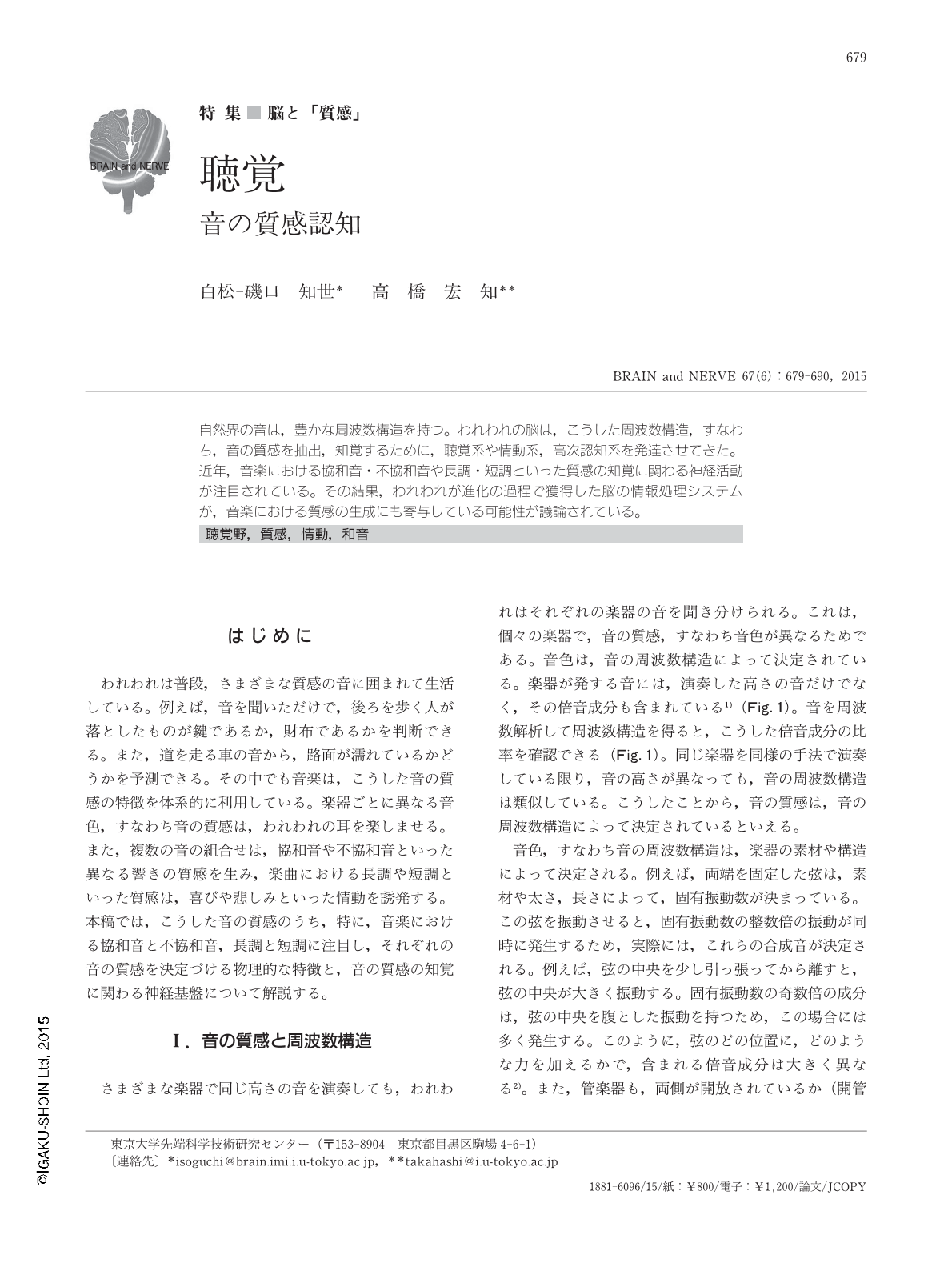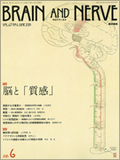Japanese
English
- 有料閲覧
- Abstract 文献概要
- 1ページ目 Look Inside
- 参考文献 Reference
自然界の音は,豊かな周波数構造を持つ。われわれの脳は,こうした周波数構造,すなわち,音の質感を抽出,知覚するために,聴覚系や情動系,高次認知系を発達させてきた。近年,音楽における協和音・不協和音や長調・短調といった質感の知覚に関わる神経活動が注目されている。その結果,われわれが進化の過程で獲得した脳の情報処理システムが,音楽における質感の生成にも寄与している可能性が議論されている。
Abstract
Natural sounds have a variety of sound spectra, which produce the so-called textures of sounds. These sound textures are extracted and perceived through interactions of the auditory, emotional, and cognitive systems in our brain. Recent studies have investigated how our brain handles musical sound textures, such as consonant and dissonant chords, or major and minor scales. Accumulating evidence indicates that the mammal auditory system has adapted to extract the harmonic structure of sounds and that this adaptation plays crucial roles in the perception of the consonance of two-tone chords. In addintion, functional magnetic resonance imaging studies have shown that major and minor scales activate not only the auditory system but also the emotional and cognitive systems. Our study revealed that phase synchrony within the auditory cortex of rodents represents the tonality of three-tone chords in a band-specific manner, and these findings support the hypothesis that the auditory system interact with the emotional and/or cognitive systems. Thus, the neural bases for the perception of sound textures are widely distributed within our brain, and these evolution of these neural systems significantly affects the establishment of musical grammar.

Copyright © 2015, Igaku-Shoin Ltd. All rights reserved.


